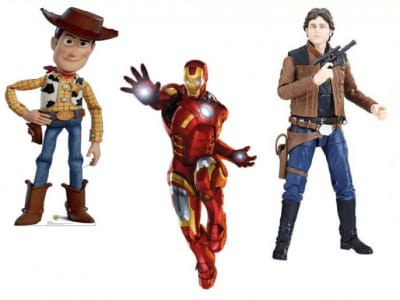Play-Doh has been entertaining children with its modelling compounds used for arts, crafts, and as playthings since 1956. Unlike other clay-like toys, Play-Doh has established a reputation for being safe, clean, non-toxic, and fun to play with; it is reflected in their motto:
You certainly won’t eat a toy, will you? (Wink)

Most Play-Doh sets are recommended to be played with by kids aged 3 years and above. And for most of us who are now grownups, there will always be memories of how we made beautiful artworks with Play-Doh and showed them off to our parents. (Hmmm, are you contemplating whether “beautiful” is the right adjective?)
Well, beautiful or not, they were “artworks from the heart” and we had fun crafting them. You still remember the unique but amorous smell, don’t you? If you have been touched my the magic of Play-Doh when you were a child or if you are already raising kids who are having fun making their own amazing sculptures with Play-Doh, we bet you will enjoy reading these fun facts about this popular modelling compound for children.
Origin by Accident
Did you know that the original compound was accidentally invented by Noah McVicker and his nephew, Joseph McVicker? In 1955, when they were trying to make wallpaper cleaner, they unintentionally made a clayish compound which would later be marketed as an educational toy for pre-school children. They initially called it the “Rainbow Modelling Compound.”
Mass and Measurements
Do you know that, if you make a great big ball of all the Play-Doh sets manufactured since its start-up, it will have a mass of over 700 million pounds?
There is also an urban legend which says that, if you take all of the Play-Doh produced since 1956 and put it through the Play-Doh Fun Factory playset, you would be able to mould a snake that could wrap around the Earth 300 times.
Production and Distribution
Play-Doh is not only known for its safety and nontoxicity; it also boasts of being environmentally-friendly. Did you know that Play-Doh is the number 1 re-usable modelling compound in the world with more than 100 million cans produced annually?
Two billion cans of Play-Doh compounds weighing more than 900 million pounds have been squished, squashed, and moulded by generations of children since 1956.
Did you know that there have been 7 million Play-Doh Fun Factory sets sold all over the world since 1999…. and counting?
Compound Ingredients
The Play-Doh compound is made primarily of water, flour, and salt. Because Play-Doh is a proprietary brand, the compound’s detailed ingredients cannot be entirely revealed. They’re an intellectual property secret – ssshhh!
Albeit the compound is non-toxic, non-irritating, and non-allergenic, children who may be allergic to wheat gluten may get an allergic reaction to this product (due to its flour content). It’s also advised to keep the product away from pets.
Keeping Your Play-Doh
In case your Play-Doh gets dried up because of being unused for a long time, you can restore its softness and mouldability by pouring a drop of water, and then squishing it in until all areas are moistened. You can also try wrapping the compound in a damp paper towel, and then bring it back into the container while replacing the cover. Let it sit overnight.
Play-Doh is manufactured with the idea that it can be played with over and over again. If you want to preserve the artwork you’ve created, the best way to do so is to use an oven curable clay.

 From Toy Trucks to Tech: The Best Toys for Boys 2024
From Toy Trucks to Tech: The Best Toys for Boys 2024
 The Best Bluey Toys in 2024
The Best Bluey Toys in 2024
 How to Choose the Best Trampoline for Kids
How to Choose the Best Trampoline for Kids
